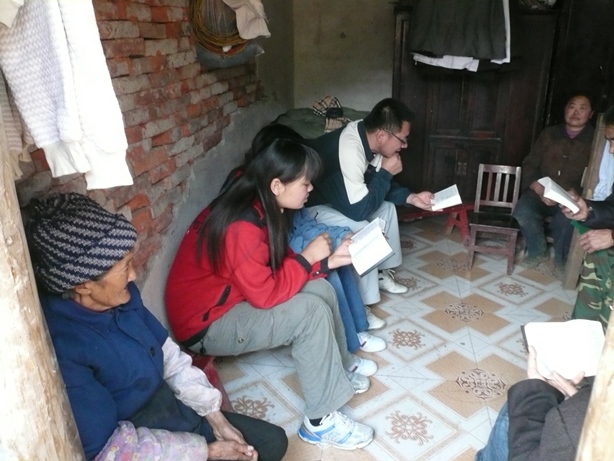The Future of the Church in China: Why China’s House Churches will Prevail
The House Churches
House church services are marked by joyful worship, indigenous songs, testimonies, and fervent prayer.
Rays of sunlight sliced through the tall trees, bringing warmth and light to the hill that our group of 50 occupied. A gentle breeze blew across the face of the lake that stretched out before us. The lake’s quiet waters reminded us that the city was far away. But we were not here to enjoy the scenery. It was Easter morning. We had come to celebrate the resurrection of our Lord.
We found our place on the side of the hill as the musicians began to lead us in songs of praise. The time of worship was very special, as normally we were not all able to meet together. In a small apartment in the city space is limited and often the volume of praise must be contained. But now, together and out in the open, the joy was visible, almost tangible, and the praises rang. And then, as the worship reached its crescendo, as if one voice we all shouted in Chinese, “Jesus is risen! He is risen indeed!”
At that moment I began to thank the Lord for the way in which he had led and blessed my family these past years. I was reminded that this service, this incredible scene, was an answer to prayer. To worship together with this wonderful group, to declare the reality of the resurrection surrounded by Chinese brothers and sisters – this was truly the fulfillment of a dream.
As the time of worship came to a close, two Chinese adults expressed their desire to commit their lives to Christ. A Christian brother, himself a government official, had brought them to the meeting. The two visitors were moved by the purity of the fellowship and the sincerity of the worship. They had also been challenged by the proclamation of the risen Christ. I had the joy of leading our two new friends in a prayer of repentance and consecration. When I opened my eyes, I saw their faces reflecting the new reality: they had entered into the kingdom of God.
After the service, we all gathered together to share a meal of fellowship. The believers brought a rich assortment of food – nothing is so varied and interesting as a Chinese meal. When the eating and conversations subsided, the group moved down to the lake and the baptismal service began. Songs and prayers punctuated the powerful testimonies of the 14 people who were baptized that day. After each testimony, the waters rippled as young believers publicly declared their allegiance to Christ. Warm sunshine and a soft breeze greeted the Christians emerging from the water. It was Easter, a day to remember.
Conclusion
The future of the church in China is destined to follow the path established by the house churches. This is true in terms of church structure, theology, and worship patterns. Undoubtedly, there will be significant diversity. The “post-denominational unity” currently touted in TSPM circles will be revealed for what it is: contrived and forced. I see this diversity as a strength rather than a weakness. It is a natural expression of the richness of the body of Christ and our own distinctiveness. It is also a natural expression of the “not-yet” or “incomplete” nature of our experience of God’s salvation. “Now we see but a poor reflection as in a mirror; then we shall see face to face” (1 Cor. 13:12). This diversity, when coupled with recognition of the richness of the body of Christ, should be welcomed and celebrated.
The future of the church in China is destined to follow the path established by the house churches.

The theology of the Chinese church will be rooted in the Bible and have a strongly missional and pragmatic emphasis. The church will be marked by an emphasis on conversion, prayer for the sick, exorcism, joyful worship, and the leading of the Holy Spirit. The church will view discipleship largely in terms of involvement in the mission of the church, and the Chinese church will become a powerful force in cross-cultural missions.
If this vision of the future is realized, then the Chinese church will also face significant challenges. The path I envision is full of risk. It is a path that may lead to conflict with the government. It is a path that will likely lead to misunderstanding and ridicule. However, it is a path that follows closely in the footsteps of Jesus and the apostles. I firmly believe it is a path that God will richly bless.
PR
Notes
Editor’s Note: This essay is a written version of a lecture Robert Menzies gave at Fuller Theological Seminary on March 14, 2016.
[1] TSPM stands for “The Three-Self Patriotic Movement,” the organization that oversees and unites the government-sanctioned churches of China. There is also a parallel organization called the “China Christian Council,” but there is much overlap in both the leadership and the functions of these groups. For the purposes of this paper will refer to the TSPM to designate the churches recognized and sanctioned by the Chinese government and the leadership structure that governs and unites these churches.
Category: Ministry, Winter 2017


